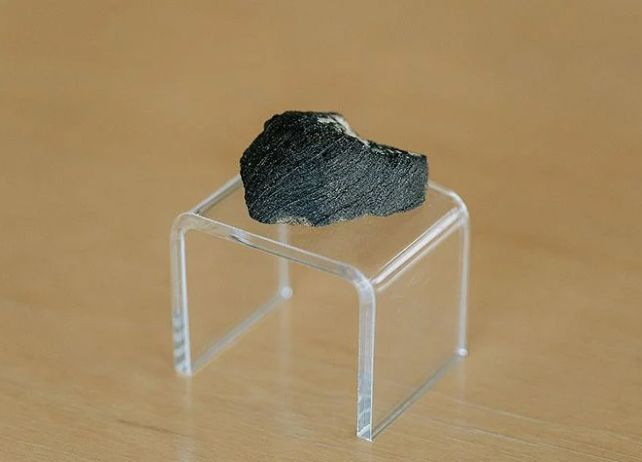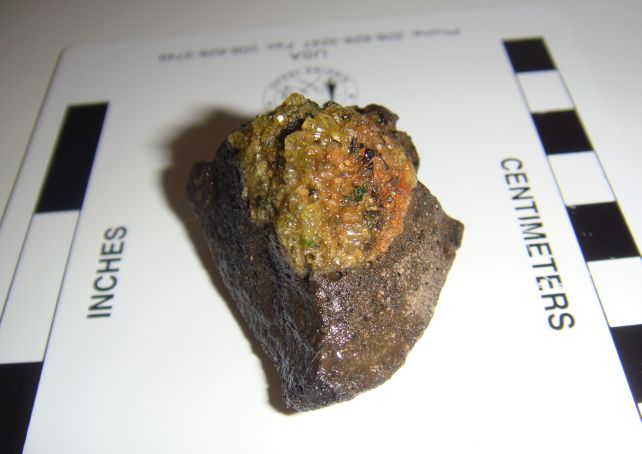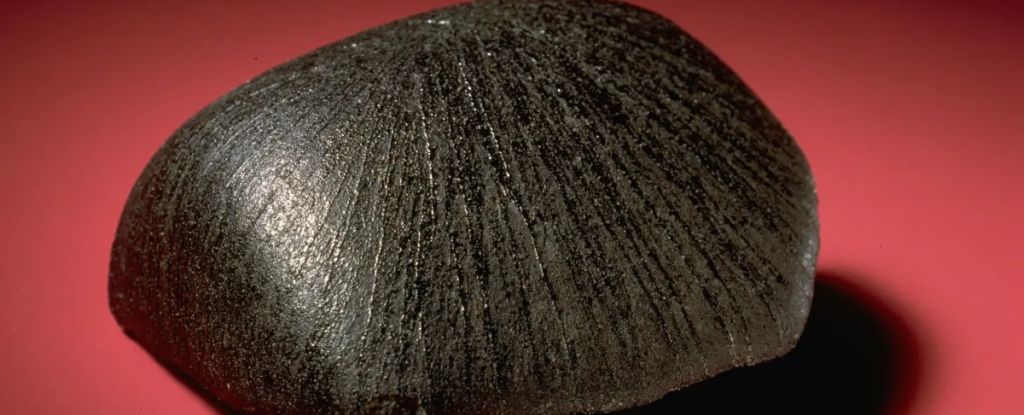Products You May Like
Evidence is growing that Mars was once sloshy and wet, draped with lakes and oceans, which lapped at shorelines and deposited sediments that are, even as you read these words, being scrutinized by robots rolling across the now dry and dusty surface.
Water was there. We know it was. But piecing together when and how, and where it went, is a little trickier to figure out. But we just got a big clue: a meteorite that was ejected from Mars 11 million years ago and subsequently made its way to Earth reveals there was liquid water on Mars less than a billion years ago.
According to a new analysis of the Lafayette Meteorite, minerals within it formed in the presence of water 742 million years ago. It’s a real breakthrough in the dating of aqueous minerals on Mars, and suggests that, sometimes, Mars might still be a little damp.
“Dating these minerals can therefore tell us when there was liquid water at or near the surface of Mars in the planet’s geologic past,” says geochemist Marissa Tremblay of Purdue University in the US.
“We dated these minerals in the Martian meteorite Lafayette and found that they formed 742 million years ago. We do not think there was abundant liquid water on the surface of Mars at this time. Instead, we think the water came from the melting of nearby subsurface ice called permafrost, and that the permafrost melting was caused by magmatic activity that still occurs periodically on Mars to the present day.”

One of the materials in question is a type of rock called iddingsite, which forms from volcanic basalt in the presence of liquid water. The Lafayette Meteorite contains iddingsite, which itself fortuitously contains inclusions of argon.
Dating minerals can be a little tricky, but we’ve been getting much better at it as our technology advances. A technique called radiometric dating can be used on isotopes of argon to obtain a precise record of when the element formed. Argon emerges from the radioactive decay of potassium; but, when there is no potassium present, a single sample of the isotope argon-40 can still be dated.
This is because the amount of the lighter isotope argon-39 that emerges when argon-40 is irradiated in a nuclear reactor is dependent on the amount of potassium that was present initially. This means the argon-39 produced can be used as a proxy for potassium; and, since potassium decays at a known rate, this means that scientists can work out how long it has been since the rock formed.
The researchers used this technique on a small sample of the Lafayette meteorite to work out how long it had been since water and rock had interacted to create iddingsite.
Being ejected from Mars during an impact event, zooming through the Solar System, then falling smack into Earth through its atmosphere, being heated on the way down, can also change rocks. The researchers were able to model and account for the temperature changes experienced by the meteorite on its long journey, and determine what effect, if any, they would have had on the apparent age of the sample.
“The [estimated] age could have been affected by the impact that ejected the Lafayette Meteorite from Mars, the heating Lafayette experienced during the 11 million years it was floating out in space, or the heating Lafayette experienced when it fell to Earth and burned up a little bit in Earth’s atmosphere,” Tremblay says.
“But we were able to demonstrate that none of these things affected the age of aqueous alteration in Lafayette.”

The findings place new constraints on the known date of moisture on Mars. The new date, the team also found, coincides with a period of heightened volcanic activity on Mars. Such activity seems much quieter now, but recent observations by the Mars InSight lander have revealed that there’s a lot more going on inside the planet than its innocent exterior suggests.
But the results don’t just have implications for our understanding of Mars. The team’s techniques have broader potential for understanding the Solar System, including the open, burning question of how Earth got its water, billions of years ago.
“We have demonstrated a robust way to date alteration minerals in meteorites that can be applied to other meteorites and planetary bodies to understand when liquid water might have been present,” Tremblay says.
The research has been published in Geochemical Perspectives Letters.
